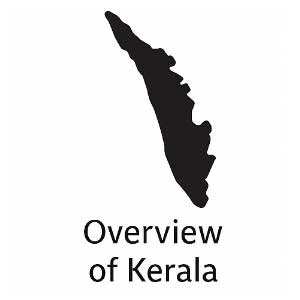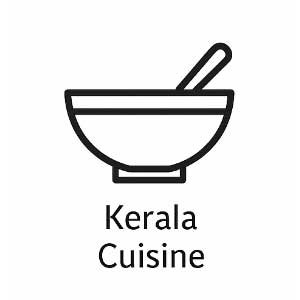

Kerala Climate
Kerala Climate is characterized by its tropical monsoon weather, which contributes to the state’s lush landscapes and vibrant biodiversity. Positioned close to the equator, Kerala enjoys a warm, humid climate throughout the year, making it a paradise for nature lovers. The state’s unique geographical features, including the Western Ghats and the Arabian Sea, play a significant role in shaping its climate. Understanding Kerala climate is essential for planning the best time to visit and for appreciating how it influences the region’s agriculture and daily life.
Overview of Kerala Climate
Kerala climate, dominated by a tropical monsoon pattern, is a key aspect of the state’s identity. The Western Ghats act as a barrier, ensuring that Kerala climate receives ample rainfall during the monsoon season. This abundant rainfall supports the state’s dense forests, extensive waterways, and rich agricultural practices. The consistent warm temperatures and high humidity levels throughout the year contribute to Kerala climate, reinforcing its reputation as a green and fertile land.


Seasons
Kerala experiences three distinct seasons: summer, monsoon, and winter, each bringing its own charm to the state. Summers, from March to May, are hot and humid, with temperatures occasionally reaching up to 35°C. The monsoon season, from June to November, is marked by heavy rainfall, cooling the state and rejuvenating its landscapes. Winters, from December to February, are mild and pleasant, with temperatures ranging from 20°C to 28°C, making it an ideal time for tourism. Understanding these seasonal variations is crucial for planning travel and agricultural activities in Kerala.
Summer(March - May)
Summer
During Kerala’s summer months, the weather turns warm and humid, with daytime temperatures often reaching around 35°C and nights cooling to about 28°C. Occasional summer showers, accompanied by thunder and lightning, bring brief relief from the heat. This period showcases bright sunny days, perfect for beach visits and backwater experiences, though travelers should be prepared for the humidity.

South Monsoon (June - September)
Monsoon
The Southwest Monsoon marks Kerala’s main rainy season, transforming the state into a lush green paradise. Heavy rains typically occur from June to August, with average temperatures ranging between 20°C and 30°C. Rivers overflow, waterfalls roar to life, and the landscape flourishes under the steady rhythm of tropical rain — a perfect time for nature lovers and photographers to experience Kerala’s raw beauty.

Post-Monsoon & Winter (September-March)
Monsoon and Winter
The Northeast Monsoon brings additional rainfall in October and November, followed by Kerala’s cool and pleasant winter season. From November to March, the weather remains comfortable, making it the best time to explore Kerala’s hill stations, beaches, and wildlife sanctuaries. With clear skies, gentle breezes, and mild temperatures, this period is considered the most favorable for travel across the state.

Tropical Monsoon Climate

Kerala climate is characterized by its tropical monsoon patterns, which bring heavy rains and warm temperatures. The state experiences two main monsoon seasons: the Southwest Monsoon, which brings the majority of the rainfall from June to September, and the Northeast Monsoon, which adds more rain from October to November. These monsoons are crucial for maintaining Kerala climate, ensuring the region’s lush greenery and supporting its diverse ecosystems. The tropical monsoon climate of Kerala ensures a year-round vibrancy and natural beauty that is unparalleled, making Kerala climate a defining feature of this enchanting region.
Best Time to Visit
The best time to visit Kerala largely depends on the activities you wish to pursue. For those interested in sightseeing and outdoor activities, the winter months from December to February offer the most pleasant weather. The monsoon season, from June to November, is ideal for experiencing Kerala’s lush landscapes and enjoying ayurvedic treatments, which are believed to be more effective during the rainy season. Summers, though hot, are perfect for visiting the hill stations and enjoying the state’s beautiful beaches. Understanding Kerala’s climate and seasons can help you choose the best time for your visit, ensuring a memorable experience.
Recommendations Based on Activities
For the best cultural experiences and festivals, plan your visit during the winter season when the weather is mild and conducive to outdoor events. If you are seeking rejuvenation through ayurvedic therapies, the monsoon season is recommended due to the favorable climate for such treatments. Adventure enthusiasts and nature lovers will find the summer months ideal for exploring Kerala’s hill stations and wildlife sanctuaries. Tailoring your visit based on Kerala’s climate and your preferred activities will enhance your overall travel experience.
Climate and Agriculture
Kerala’s climate plays a vital role in its agricultural practices, influencing the types of crops grown and the farming methods used. The abundant rainfall during the monsoon seasons ensures that Kerala’s paddy fields, tea plantations, and spice gardens remain lush and productive. The tropical climate supports a wide variety of crops, including rice, coconut, rubber, and an array of spices such as black pepper, cardamom, and cloves. Understanding the relationship between climate and agriculture in Kerala is essential for appreciating the state’s economic and cultural landscape.
How Climate Affects Farming and Crops
The tropical monsoon climate of Kerala provides the ideal conditions for diverse agricultural activities. The heavy rains during the monsoon seasons are crucial for irrigating crops and replenishing water resources. This consistent rainfall supports the cultivation of rice, which is a staple in the region, along with cash crops like rubber and spices that contribute significantly to the state’s economy. The warm and humid climate also favors the growth of various fruits, vegetables, and medicinal plants, making Kerala a hub of agricultural biodiversity.








